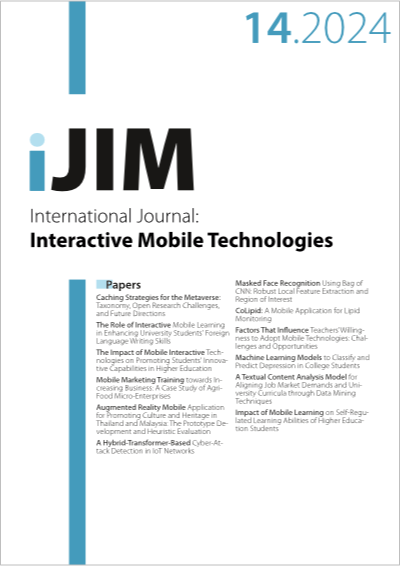The Impact of Mobile Interactive Technologies on Promoting Students' Innovative Capabilities in Higher Education
DOI:
https://doi.org/10.3991/ijim.v18i14.50403Keywords:
higher education, mobile interactive technologies, students' innovative capabilities, sequential recommendation, personalized learning, mobile interactive social relationships, contextual informationAbstract
This paper aims to explore the impact of mobile interactive technologies on fostering the development of students’ innovative capabilities in higher education and proposes a solution to the sequential recommendation problem. Initially, we define the importance of students’ innovative capabilities and identify the potential applications of mobile interactive technologies in this context. We analyze existing research and identify limitations in meeting individualized student needs, mobile interactive social relationships, and contextual information. To address this research gap, this paper presents a specific definition of the sequential recommendation problem that aims at enhancing the development of students’ innovative capabilities and constructs a sequential recommendation model that integrates contextual information and mobile interactive social relationships. Composed of an embedding representation layer, a spatial-temporal hierarchical pooling (SHP) layer, and a fusion prediction layer, this model is designed to better capture students’ personalized learning preferences and social influences, offering precise learning resource recommendations to promote the development of their innovative capabilities.
Downloads
Published
How to Cite
Issue
Section
License
Copyright (c) 2024 Nan Zhang (Submitter); Guoyun Chen

This work is licensed under a Creative Commons Attribution 4.0 International License.



